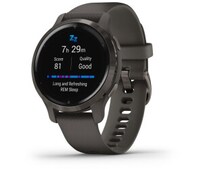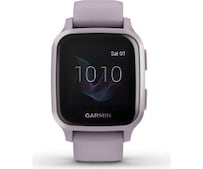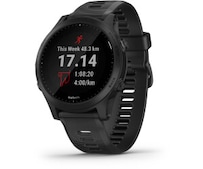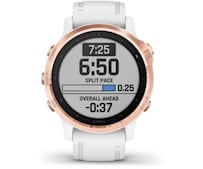Garmin’s first Fenix came ten years ago, and since then new members of the high-priced watch series have followed regularly. It has a cult following in sports circles – because of its striking appearance and sophisticated training functions. Garmin is now introducing a paradigm shift – the Fenix 7 is getting a touchscreen! We tested the Garmin Fenix 7S Solar variant.
Garmin Fenix 7S, 7, 7X: One watch, many faces
As usual, Garmin is releasing the Fenix 7 in three sizes, measured by the case diameter in millimeters (mm):
- Garmin Fenix 7S: 42mm
- Garmin Fenix 7: 47mm
- Garmin Fenix 7X: 51mm
In addition to the size, Garmin makes differences in the equipment: models with Solar in the name also have a solar charging lens, watches with sapphires Instead of Gorilla Glass, the name has a more scratch-resistant sapphire glass. The Garmin Fenix 7S Solar tested here is therefore the smallest of the new watches. It comes with the sun charging technique but without the sapphire crystal.
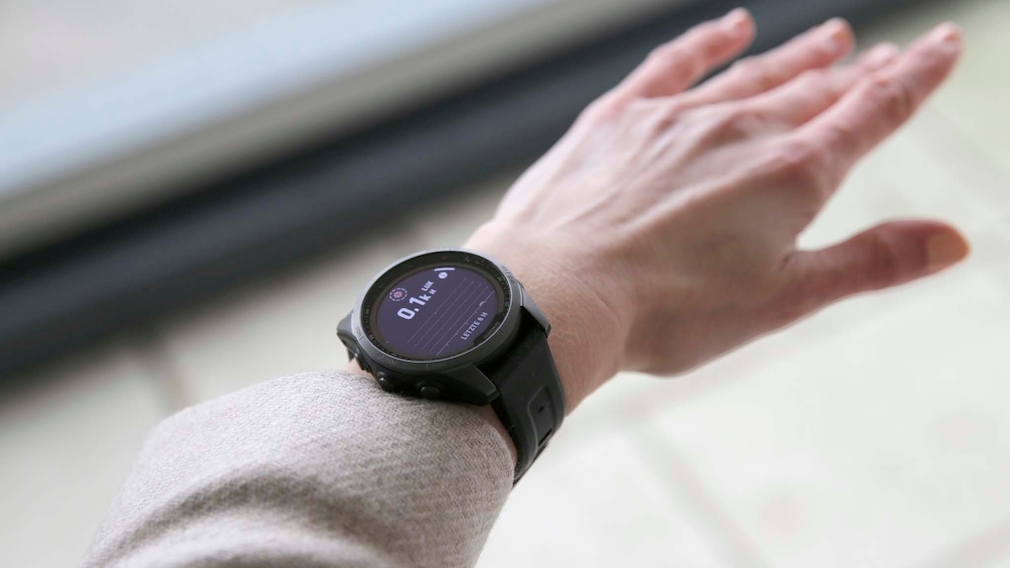
The solar charging lens needs direct sunlight.
Endurance and Solar Charge
Garmin Fenix 7 series gets a touchscreen
The manufacturer has recognized that sports freaks also want a smartwatch in everyday life and has installed a touchscreen in the Fenix 7 series for the first time. This shortens the way through the extensive, sometimes complicated menus. However, Garmin remains true to its own old wisdom: the touch surface is deactivated during training to avoid unwanted inputs. If you want, you can turn the touchscreen back on via the menu, like this: press and hold the middle left button until the menu appears. Then the menu items system, touch screen select and the switch at during the activity turn on. Good: The new touch display reacts quickly to inputs.
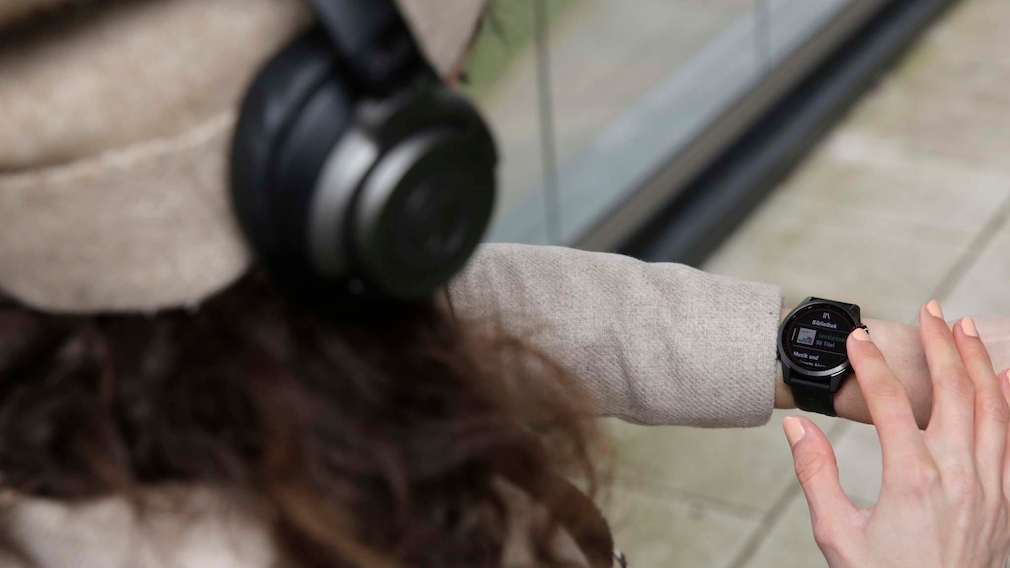
The touchscreen reacts quickly, streaming music can be transferred from the cell phone to the watch in no time.
The display is best outside
The Fenix continues to rely on a transflective memory-in-pixel display (MIP), which is best read in bright surroundings. Compared to smartphone displays, the display appears dark and lacks contrast indoors. It works in a power-saving manner and enables the combination with the solar charging lens. If you don’t like it: With the epix Garmin has shown a version that is identical in construction to the Fenix 7, which uses OLED technology and is therefore also easy to read indoors.
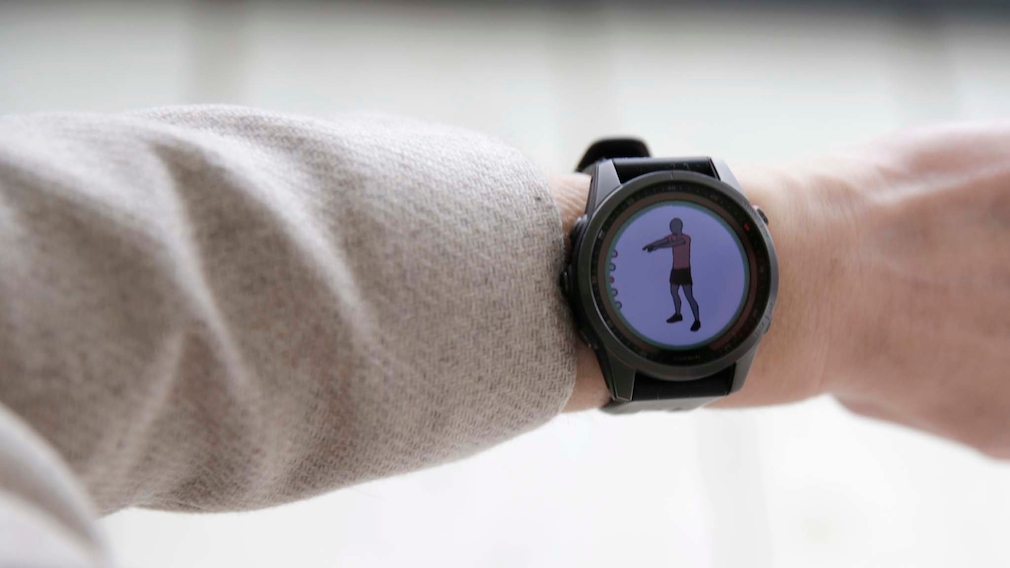
The animated workout videos guide the training.
Great for sports, good for everyday use
Training sensors and functions are in Garmin’s DNA:
- heart data: The Garmin Fenix 7S Solar correctly determined the heart rate during training. From this, she calculates all kinds of performance values in order to assess the training and recovery status.
- Fitness tracking: The watch correctly records sleep, although it is uncomfortable at night. During the day, the watch provides health insights: the body battery estimates the energy level, the health snapshot is a snapshot of heart rate, breathing, etc.
- Training Features: The Garmin Fenix 7S Solar records many sports and uses GPS and barometer to record routes. Garmin gives users leeway for numerous settings, for example to choose which values the display shows during sport. Training plans are available via the app, and animated workouts on the watch display guide fitness exercises.
Special functions for cracks
For ambitious running or cycling fans, Garmin has the stamina-Function developed. Behind this is a bar graph that estimates the remaining energy in the body. During a short test run, the display worked: those who reduce the speed conserve their energy, those who accelerate make full use of it – the bar changed accordingly during the test run. With Up Ahead refreshment points can be marked in advance along the route for long-distance runs. During the tour, the clock will show and guide to these places.

The Stamina value helps to get the maximum out of yourself when running or cycling.
Cleverness of the Garmin Fenix 7S Solar
The Garmin Fenix 7S Solar also offers clever functions like a smartwatch:
- Messaging: As long as the cell phone is connected via Bluetooth, the Garmin Fenix 7 mirrors calls and messages and triggers an emergency message via cell phone in the event of a fall. In connection with Android, an incoming mail or WhatsApp can be answered with a short, pre-formulated message. Hands-free telephony and LTE are missing.
- Music: The Fenix not only remotely controls the music playback on the mobile phone, it is also suitable as a music player in connection with Bluetooth headphones. With a subscription to Spotify, Deezer or Amazon Music, content can be transferred from the cell phone to the watch. In the test, pairing with Spotify was quick, and a playlist could be quickly saved on the watch. Anyone who prefers to listen to MP3 data takes the complicated route via the computer.
- Outdoor Maps Working Offline: Garmin has adopted this special equipment from the Fenix 6 series. The maps don’t work quite as easily as Google Maps on a cell phone, but the touchscreen makes them easier to use. The cards don’t need internet and beat about with the round trip-Feature a nearby jogging route. The maps also show golf courses and ski maps. Good: The Komoot app is also on board. Anyone who is already using it on their cell phone will find their routes on the watch after logging in.
price and availability
The Garmin Fenix has always been expensive and will remain so. It starts at 680 euros for the Fenix 7S (without solar), the Fenix 7S Solar costs from 780 euros (as of January 31, 2022). Sales started in January 2022.

